Meyer-Optik-Goerlitz Trioplan 100mm f/2.8 Review

Introduction
The Meyer-Optik-Goerlitz Trioplan 100mm f/2.8 is a modern version of the classic Trioplan f2.8/100 lens, known for its ‘soap bubble’ bokeh and sharp focus and first produced in 1916. The updated Trioplan is manufactured using high-end coated glass made by Schott, features an iris diaphragm of 15 steel blades for a near-circular aperture, and comes in 9 different mounts, including Canon, Fuji X, Nikon, M42, Micro Four Thirds, Sony E, Pentax K, Leica M and Leica TL. The optical construction follows a classic triplet design and the image circle has a diameter of 44mm, making the lens suitable for 35mm full-frame cameras. The Meyer-Optik-Goerlitz Trioplan 100mm f/2.8 lens costs €1,499.00.
Ease of Use
With a maximum diameter of 52mm and a length of 120mm, the Meyer-Optik-Goerlitz Trioplan 100mm f/2.8 is a short telephoto fixed focal length optic that's well-suited to Sony's full-frame mirrorless camera bodies. Weighing in around 800g, it's quite a heavy lens.
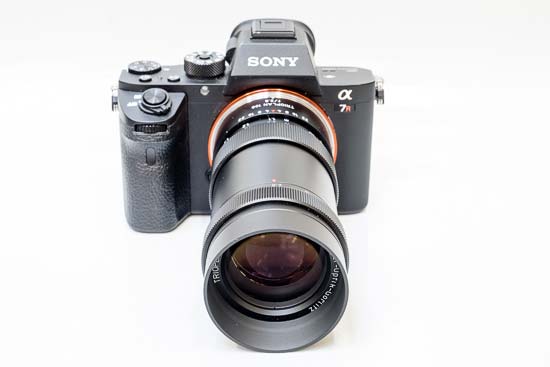 The Meyer-Optik-Goerlitz Trioplan 100mm f/2.8 lens mounted on a Sony A7R II body
The Meyer-Optik-Goerlitz Trioplan 100mm f/2.8 lens mounted on a Sony A7R II body
 The Meyer-Optik-Goerlitz Trioplan 100mm f/2.8 lens mounted on a Sony A7R II body
The Meyer-Optik-Goerlitz Trioplan 100mm f/2.8 lens mounted on a Sony A7R II body
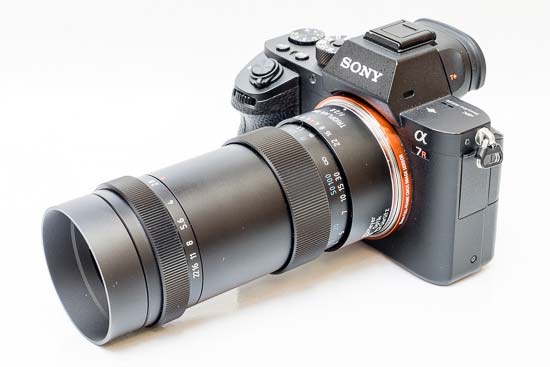 The Meyer-Optik-Goerlitz Trioplan 100mm f/2.8 lens mounted on a Sony A7R II body
The Meyer-Optik-Goerlitz Trioplan 100mm f/2.8 lens mounted on a Sony A7R II body
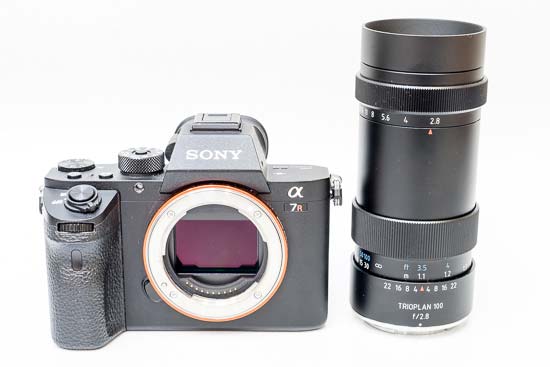 The Meyer-Optik-Goerlitz Trioplan 100mm f/2.8 lens mounted alongside a Sony A7R II body
The Meyer-Optik-Goerlitz Trioplan 100mm f/2.8 lens mounted alongside a Sony A7R II body
The Meyer-Optik-Goerlitz Trioplan 100mm f/2.8 boasts superb build quality. The lens has an all-aluminium casing and it features a metal bayonet. With no need for a zoom ring, the manual focusing ring spans a significant width of the lens barrel and is exceptionally smooth to operate, complete with a useful depth of field scale.
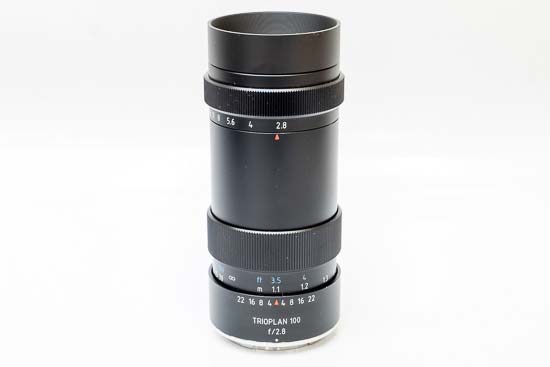 Side of the Meyer-Optik-Goerlitz Trioplan 100mm f/2.8 lens
Side of the Meyer-Optik-Goerlitz Trioplan 100mm f/2.8 lens
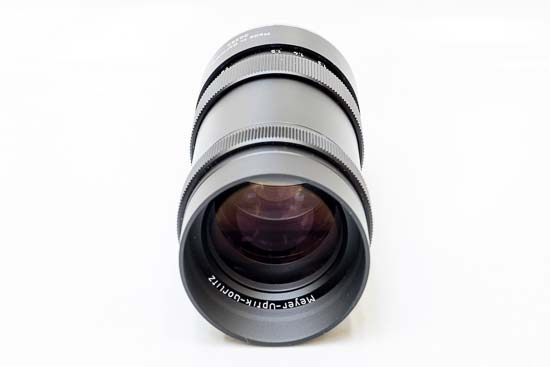 Front of the Meyer-Optik-Goerlitz Trioplan 100mm f/2.8 lens
Front of the Meyer-Optik-Goerlitz Trioplan 100mm f/2.8 lens
 Rear of the Meyer-Optik-Goerlitz Trioplan 100mm f/2.8 lens
Rear of the Meyer-Optik-Goerlitz Trioplan 100mm f/2.8 lens
At the end of the lens is the aperture ring, with the aperture ranging from f/2.8 to f/22. Note that this ring rotates smoothly throughout the range, with no actual hard stops (except at f/2.8 and f/22), which is perhaps better suited to movie recording than shooting stills.
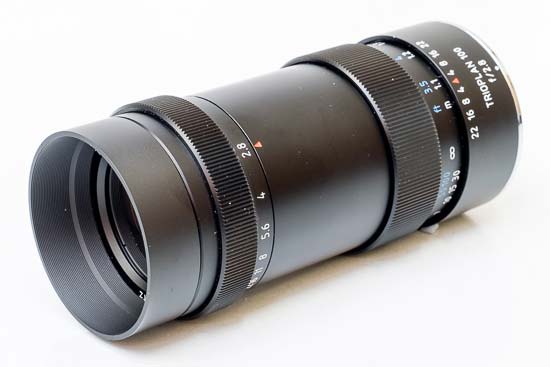 Side of the Meyer-Optik-Goerlitz Trioplan 100mm f/2.8 lens
Side of the Meyer-Optik-Goerlitz Trioplan 100mm f/2.8 lens
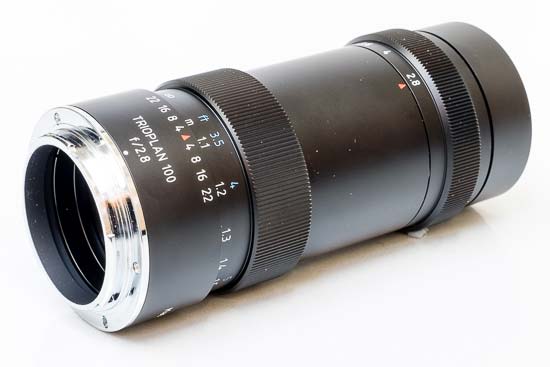 Side of the Meyer-Optik-Goerlitz Trioplan 100mm f/2.8 lens
Side of the Meyer-Optik-Goerlitz Trioplan 100mm f/2.8 lens
The Meyer-Optik-Goerlitz Trioplan 100mm f/2.8 is a relatively simple lens with just 3 lens elements in 3 groups. A 15-bladed rounded diaphragm, combined with the fast maximum aperture, helps provide incredibly smooth bokeh blur. There’s no optical image stabilisation, but the Meyer-Optik-Goerlitz Trioplan 100mm f/2.8's short telephoto focal length and fast maximum aperture largely alleviate the need for it.
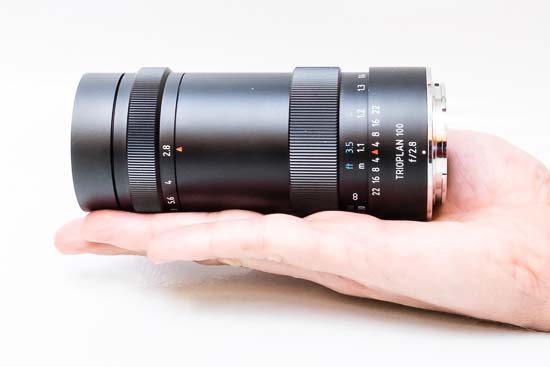 The Meyer-Optik-Goerlitz Trioplan 100mm f/2.8 lens in-hand
The Meyer-Optik-Goerlitz Trioplan 100mm f/2.8 lens in-hand
A small round metal lens hood is supplied in the box. The filter diameter is 52mm.
Focal Range
The diagonal angle of view is 24°, i.e. the same as that of a 100mm lens in a 35mm system.
 Field of view at 100mm
Field of view at 100mm
Manual Focusing
The Meyer-Optik-Goerlitz Trioplan 100mm f/2.8's manual focusing ring spans a significant width of the lens barrel and is exceptionally smooth to operate, complete with a useful depth of field scale. It also has a large rotation angle which enables precise focusing and moves smoothly without any play. The precise engravings in meters and feet help make manual focusing a veritable pleasure, especially in conjunction with the excellent Peaking feature offered by the Sony A-series cameras.
Chromatic Aberrations
Lateral chromatic aberrations, typically seen as blue or purple fringes along contrasty edges, are well controlled with the Meyer-Optik-Goerlitz Trioplan 100mm f/2.8 lens. The crops below give you an idea of what you should expect in a worst-case scenario.
 |
 |
Light Fall-off
Wide open at f/2.8, there's some noticeable light fall-off in the corners, but this clears up quickly upon stopping down.
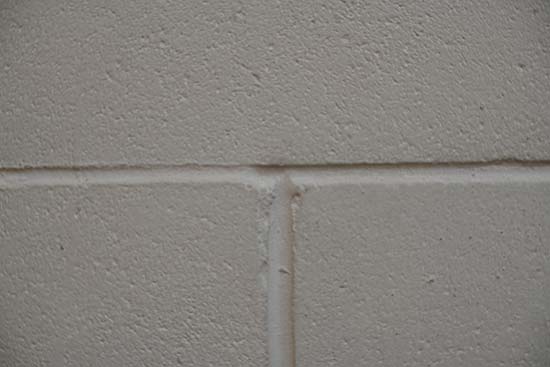 Vignetting at 100mm
Vignetting at 100mm
Macro
With a close-focus point of 1m, the Meyer-Optik-Goerlitz Trioplan 100mm f/2.8 isn't really a macro lens. The photo below shows how close you can get to your subject. Note that with the use of extension tubes, the lens can achieve a reproduction ratio of up to 2:1.
 Close-up performance
Close-up performance
Bokeh
Bokeh is a word used for the out-of-focus areas of a photograph, and is usually described in qualitative terms, such as smooth / creamy / harsh etc. The Meyer-Optik-Goerlitz Trioplan 100mm f/2.8 lens has an iris diaphragm with no less than 15 circular aperture blades, which has resulted in outstanding bokeh, as you can see in the crops below.
 |
 |
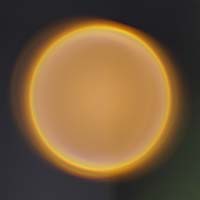 |
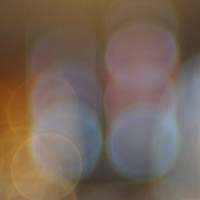 |
Sharpness
In order to show you how sharp this lens is, we are providing 100% crops on the following page.
